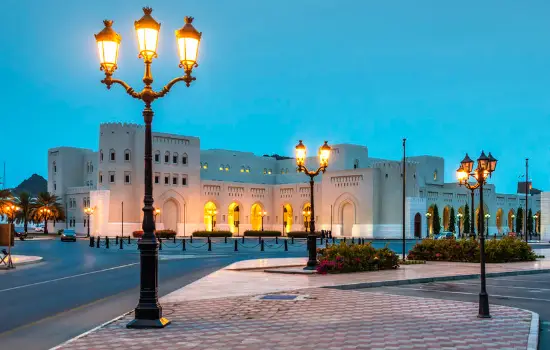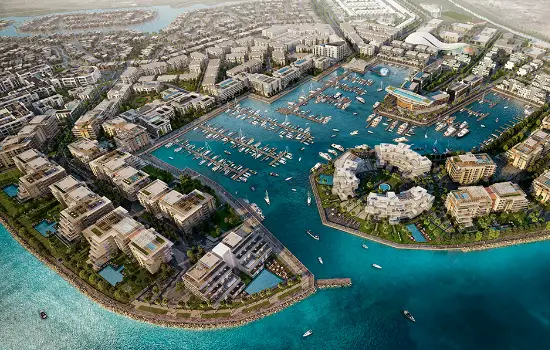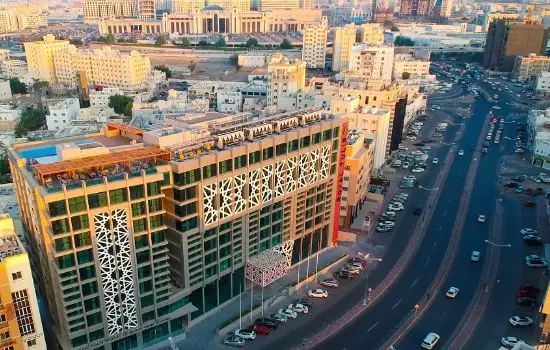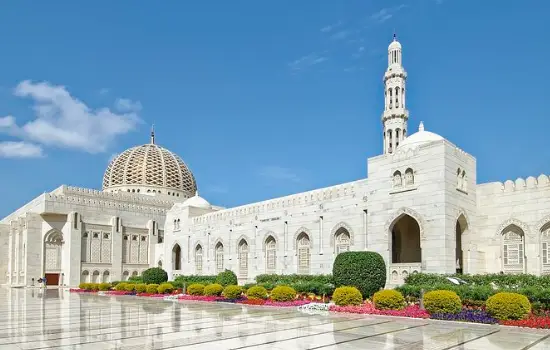Its proximity to the strategic Strait of Hormuz gives it a unique geopolitical significance. The cityscape of Muscat is characterized by low-rise white buildings, showcasing a distinctive and traditional architectural style that gives the city a unique charm.
In the northeastern part of the city lies the port district of Muttrah, known for its scenic corniche and prominent harbor, which plays a vital role in trade and maritime transportation. Muscat’s economy is largely based on commerce, the export of oil and liquefied natural gas (LNG), and port-related activities.
History of Muscat
The history of Muscat, the capital of Oman, dates back to the 6th century BCE, when organized burial sites of fishermen were discovered in the Ras Al Hamra area, indicating early settlement and ritual practices. In the southern part of the city, pottery remains have also been found, suggesting that Muscat had connections with ancient civilizations—particularly the Indus Valley Civilization.
Muscat’s prominence as an important maritime port is documented as early as the 1st century CE. The Greek geographer Ptolemy referred to it as “Cryptus Portus” (Hidden Port), while Pliny the Elder called it “Amithoscuta,” both names reflecting the city’s maritime and commercial significance in antiquity.
History of Muscat

Geographical Location and Natural Features of Muscat
Muscat is located in northeastern Oman, with the Tropic of Cancer passing just south of the region. To the west, it borders the plains of the Al Batinah area, and to the east, it neighbors the Ash Sharqiyah region. The interior plains of Ad Dakhiliyah lie to the south of Muscat, while the Gulf of Oman defines the city’s northern and western boundaries.
Muscat’s deeply indented and curved coastline has given rise to two major natural harbors in the Muttrah and Muscat areas, playing a vital role in trade and maritime transportation.
Geologically, the region is characterized by volcanic rocks such as serpentinite and diorite, which form the rugged landscape. These rock formations stretch along the coast from Darsait to Yiti, covering a distance of approximately 10 to 12 kilometers. The surrounding hills and mountains consist of plutonic and igneous rocks such as serpentinite, greenstone, and basalt, reflecting the geological features of the southeastern Arabian Peninsula.
In the south of Muscat, layers of volcanic rock have fractured and shifted, reaching elevations of around 1,800 meters in the Ad Dakhiliyah region, including Jebel Akhdar, the highest mountain range in the country. The hills surrounding Muscat are largely barren but rich in mineral resources, particularly iron.
Muscat’s ecosystem is uniquely enriched by coral reefs, a variety of halophytic plant species, and natural reserves such as the Qurum Nature Reserve. The surrounding waters are home to abundant marine life including glassfish, spiny lobsters, and sardines, with diverse coral reefs forming an essential part of the region’s marine biodiversity.
Climate and Weather Conditions of Muscat
Muscat, the capital of Oman, has a hot and arid climate, characterized by long summers that can sometimes bring storms, and mild to warm winters. The city receives an average annual rainfall of around 10 centimeters (100 mm), primarily occurring between December and April. Overall, precipitation in Muscat is very limited, with only small amounts of rain recorded in most months.In recent years, tropical systems originating from the Arabian Sea have brought unexpected and heavy rainfall to Muscat. For example, Cyclone Gonu in June 2007 and Cyclone Phet in June 2010 resulted in more than 100 mm of rain in a single day, causing significant damage.During the summer, Muscat experiences extremely high temperatures combined with high humidity, with temperatures sometimes reaching up to 45°C (113°F). These climatic conditions pose particular challenges for daily life and economic activities in the region.
Economy of Muscat, the Capital of Oman

Muscat’s economy, like that of the entire country of Oman, is primarily based on trade and commerce. Historically, its traditional exports have included dates, pearls, and fish, and local markets in Muscat are still renowned for offering Omani handicrafts and traditional products.
Since the 1960s, with the development of the oil industry, Muscat’s economy has undergone a significant transformation. The oil sector has become the second-largest employer in the city after the government. Major international corporations such as Royal Dutch Shell, Total, and Partex are among the key stakeholders in Oman’s oil industry, with regional oil production estimated at around 720,000 barrels per day.
In addition, major commercial groups like the Suhail Bahwan Group—which represents brands such as Toyota, Toshiba, Kia, and Hertz—play a significant role in Muscat’s economic landscape.
The Muscat Securities Market (MSM), established in 1988, serves as Oman’s main stock exchange. Today, it holds a distinguished position in the region due to its transparency standards and advanced regulatory framework.
Port Sultan Qaboos, Muscat’s main commercial seaport, plays a crucial role in facilitating trade between Oman and countries in the Gulf region, the Indian subcontinent, and East Asia, handling an annual trade volume exceeding 1.6 million tons.
However, the rise of the Jebel Ali Free Zone near Dubai has made it the region’s largest seaport, with over 44 million tons of cargo handled annually. A significant portion of Muscat’s infrastructure remains owned and managed by the Omani government.
Omantel, the country’s largest telecommunications provider, offers all local, international, and internet services, and currently operates as the sole internet provider in Oman.
Additionally, large industrial complexes like CK Industries, headquartered in Rusayl, contribute to the city’s industrial and economic capacity.
Culture and Heritage of Oman
Due to its unique geographical location and rich historical background, Oman has a distinct culture among Middle Eastern countries. Although the modern Omani nation-state is relatively young and its national identity is more recently established compared to some of its Arab neighbors, the country’s cultural and social diversity sets it apart from other Gulf nations.
One of the most prominent expressions of Omani culture is its ancient shipbuilding tradition. Seafaring has always played a key role in connecting Omanis to ancient civilizations and in facilitating global trade. The port city of Sur is renowned as one of the major shipbuilding centers along the Indian Ocean. Building a traditional ‘Ghanjah’ ship takes nearly a year to complete. Other well-known types of Omani ships include the ‘Sambuq’ and the ‘Badan’.
In terms of archaeological heritage, Oman also holds notable significance. In March 2016, archaeologists identified the remains of a sunken ship near Al Hallaniyah Island, believed to be part of the Esmeralda, a vessel from Vasco da Gama’s fleet (1502–1503 AD). The ship was first discovered in 1998, and in subsequent years, extensive underwater excavations were carried out through a collaboration between Oman’s Ministry of Heritage and Culture and the international company Blue Water Recoveries.
Demographics of Muscat, the Capital of Oman
Muscat, as the capital of Oman, is the country’s largest and most populous city. According to data published by the National Centre for Statistics and Information of Oman, the total population of the Muscat Governorate was estimated at around 1.4 million as of September 2018.
Historically, Muscat has been recognized as a vital trading port, especially since the early 1st century CE, facilitating exchanges between the East and the West. Over the centuries, the city has come under the control of various local tribes as well as foreign powers, including the Persians, the Portuguese, and the Ottoman Empire. This diverse historical background has played a significant role in shaping Muscat’s current demographic and cultural structure.
In the 18th century, Muscat’s military influence and power extended beyond Oman’s borders, reaching as far as the East African coast and the Zanzibar region. Muscat’s strategic position as a key port along the Gulf of Oman attracted foreign merchants and migrants, turning it into a hub of international exchange.
As a result, communities such as Persians, Balochis, and Sindhis settled in the city, becoming an integral part of Muscat’s social and economic fabric.
Transportation in Muscat, the Capital of Oman

Sultan Qaboos Street is the main transportation artery in Muscat, stretching from the west to the east of the city. This route ultimately connects to Al Nahdha Street near the Al Wutayyah area. Major junctions such as Nizwa Road and Emirates Road intersect with Sultan Qaboos Street in areas like Rusayl and Ruwi.
In the northeastern part of the city, the Muttrah area featuring Muscat Port, the Corniche, and Mina Qaboos lies along the coastal stretch bordering the Gulf of Oman.
Other important coastal areas in Muscat include Darsait, Mina Al Fahal, Ras Al Hamra, the Qurum Heights, Al Khuwair, and Al Seeb.
Residential and commercial zones are mainly concentrated in inland districts such as Al Hamriyah, Wadi Al Kabir, Ruwi, Al Wutayyah, Madinat Qaboos, Al Azaiba, and Al Ghubrah.
Transportation and mobility in Muscat are easily facilitated through a network of public transportation, taxis, and private vehicles offering convenience for daily life and economic activity in the capital.
Popular Attractions and Landmarks in Muscat, the Capital of Oman

Among the many attractions in Muscat, popular landmarks include Bait Al Jazirah, Bait Al Maghib, Bait Al Faransa, Bait Al Sayyid Nader, Bait Al Zubair, and Bait Al Khareejiyah—all of which are well-loved by locals and visitors alike. The city is also home to numerous mosques, such as the Sultan Qaboos Grand Mosque, Ruwi Mosque, Saeed bin Taimur Mosque, and Zawawi Mosque. Additionally, several Shiite mosques can also be found in the area.
Muscat boasts a number of museums, including the Oman Heritage Museum, National Museum of Oman, Oman Children’s Museum, Bait Al Zubair, Oil and Gas Exhibition Centre, Omani-French Museum, Sultan’s Armed Forces Museum, and the Oman Aquarium and Marine Science and Fisheries Centre.
Recent cultural projects include the Royal Opera House, which opened on October 14, 2011. One of the most notable upcoming developments is the new National Museum of Oman, which is expected to stand as an architectural gem alongside the Sultan Qaboos Grand Mosque.
The city’s main shopping district is located in the Qurum commercial area, although numerous shopping malls are spread throughout Muscat. One of the largest malls in the country is Oman Avenues Mall, located in Al Ghubrah. The second-largest shopping complex, Muscat City Centre, is situated near Muscat International Airport and features a wide range of international brands and the country’s largest Carrefour hypermarket.
Starting a new business in Muscat is a unique idea that offers a promising opportunity to establish a life in this country with ease.
In this article, we explored everything you needed to know about Muscat, the capital of Oman.
What’s your impression of this city?

